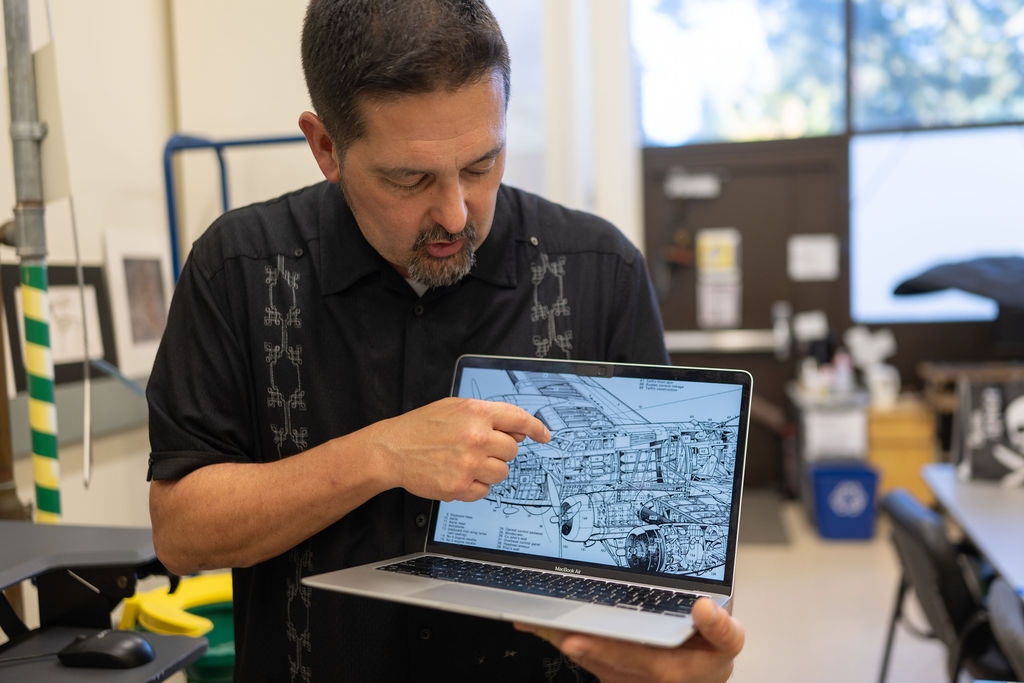Science
UC Berkeley Project Uses Crowdsourcing to Recover WWII Soldiers

A new initiative led by **Jun Sunseri**, an associate professor of anthropology at **UC Berkeley**, aims to expedite the recovery of service members killed during **World War II**. The project, titled the **Missing American Aircrews Project**, seeks to create a comprehensive resource library using crowdsourced imagery and historical data, which could significantly aid in the identification and recovery of remains.
Approximately **80,000 U.S. servicemembers** are still listed as missing, with the **Defense POW/MIA Accounting Agency (DPAA)** estimating that around **38,000** of these remains are recoverable. Sunseri, drawing on his background in mechanical engineering and archaeology, is developing a digital toolkit designed to assist teams involved in recovery missions. He aims to bridge the gap between experienced archaeologists and volunteers who may lack technical knowledge about military aircraft.
Sunseri’s inspiration for the project stemmed from family stories, particularly those of his grandfather, **Stanley**, who served as a mechanic in the U.S. Army Air Forces. The emotional weight of these narratives drives the urgency of the initiative. “We need to build something,” Sunseri recalled thinking after visiting various air museums to gather information on what remains after decades of exposure and potential crashes.
Crowdsourcing to Enhance Recovery Efforts
The project features a three-pronged approach to develop a library of **2D and 3D images** and videos of military aircraft and associated equipment. The first phase involves crowdsourcing high-quality visuals from the public, particularly from visitors to military museums. Sunseri encourages anyone with photographs of planes or military artifacts to contribute, as these resources could greatly enhance the contextual understanding of recovery sites.
Sunseri emphasizes the importance of detailed records and images, which can help teams identify equipment parts, such as distinguishing between a buckle for a throat microphone and a seatbelt. This clarity can significantly improve the efficiency of recovery operations at sites where debris is widespread.
“We’re hoping that we get a lot of participants from all places pitching in what they know and can send references for,” Sunseri stated, highlighting the collaborative nature of the initiative.
The second phase of the project will involve collaboration with military history enthusiasts and veterans, who will assist in validating and organizing the crowdsourced content. Their expertise will be instrumental in creating comprehensive mission-specific packets that recovery teams can access while in the field.
Creating a Comprehensive Resource Library
The final phase of the project aims to compile all resources into a digital library, categorized by aircraft type, mission details, and geographical location. This will allow recovery teams to download information directly to their devices, enabling them to access critical data offline. For instance, a diver investigating a suspected crash site in the Pacific Ocean could consult a 3D model of the aircraft and its components, aiding in navigation and recovery efforts.
Sunseri’s lab group, comprising students and volunteers, has already begun engaging with local air museums and participating in recovery operations. They are developing workflows and training materials to empower new volunteers to contribute effectively to the project.
Despite the ambitious scope of the initiative, Sunseri notes that the project is currently self-funded. “It’s a scrappy little lab group of archaeologists here with zero funding, so we’re doing our best,” he said. His team has completed training through the DPAA and is seeking further collaboration to enhance their efforts.
Sunseri’s experiences during a recent recovery mission in **Germany** reinforced the potential impact of a comprehensive digital resource. He believes that having such tools readily available could significantly increase the chances of successful missions.
Ultimately, the Missing American Aircrews Project serves a dual purpose: aiding the recovery of fallen service members and fostering a sense of community involvement in historical preservation. Sunseri expressed hope that the initiative can bridge divides within society, bringing together diverse groups to work towards a shared goal.
“It’s about giving these families closure and finally bringing these service members home,” he stated, underscoring the emotional significance of the project. For those interested in contributing or learning more, additional information is available on the Missing American Aircrews Project website.
-

 Top Stories2 weeks ago
Top Stories2 weeks agoMarc Buoniconti’s Legacy: 40 Years Later, Lives Transformed
-

 Health2 weeks ago
Health2 weeks agoInnovative Surgery Restores Confidence for Breast Cancer Patients
-

 Sports3 weeks ago
Sports3 weeks agoSteve Kerr Supports Jonathan Kuminga After Ejection in Preseason Game
-

 Science3 weeks ago
Science3 weeks agoChicago’s Viral ‘Rat Hole’ Likely Created by Squirrel, Study Reveals
-

 Entertainment3 weeks ago
Entertainment3 weeks agoZoe Saldana Advocates for James Cameron’s Avatar Documentary
-

 Business3 weeks ago
Business3 weeks agoTyler Technologies Set to Reveal Q3 2025 Earnings on October 22
-

 Politics3 weeks ago
Politics3 weeks agoDallin H. Oaks Assumes Leadership of Latter-day Saints Church
-

 Lifestyle3 weeks ago
Lifestyle3 weeks agoKelsea Ballerini Launches ‘Burn the Baggage’ Candle with Ranger Station
-

 Lifestyle3 weeks ago
Lifestyle3 weeks agoDua Lipa Celebrates Passing GCSE Spanish During World Tour
-

 Health3 weeks ago
Health3 weeks agoCommunity Unites for Seventh Annual Mental Health Awareness Walk
-

 Health2 weeks ago
Health2 weeks ago13-Year-Old Hospitalized After Swallowing 100 Magnets
-

 Entertainment3 weeks ago
Entertainment3 weeks agoTom Cruise and Ana de Armas End Romance Amid Career Focus









